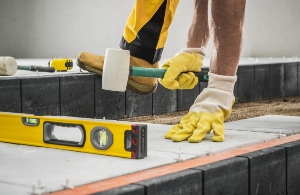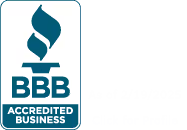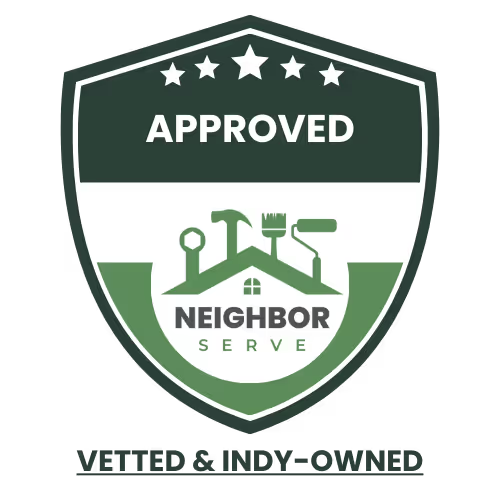When storms damage a roof, water can pour into a home and cause thousands of dollars in damage within hours. Emergency roof tarping provides immediate temporary protection by covering damaged areas with waterproof material until permanent repairs can be made. This quick response service operates 24/7 to help homeowners protect their property from further harm.
Emergency tarping involves more than simply throwing a tarp over a hole. Professional crews assess the damage, secure heavy-duty materials properly, and ensure the covering will hold during additional weather events. The service buys homeowners valuable time to work with insurance companies and schedule permanent repairs.
Understanding how emergency tarping works, what it costs, and how to choose reliable contractors can make the difference between minor repairs and major reconstruction.
In this article, you’ll learn how emergency tarp roofing service protects your home from storm damage while you arrange permanent repairs.
Let’s break down the key points you should consider.
- What an emergency roof tarp does (and what it doesn't)
- First-hour moves before the crew arrives
- Emergency tarping cost and what affects the fee
- From tarp to permanent repair without delays
- Choosing roof tarping services you can trust
Keep reading! Knowing the right steps to take before help arrives also helps limit damage and keeps families safer during stressful situations.
What an emergency roof tarp does (and what it doesn't)
Emergency tarps provide temporary protection from weather while homeowners arrange permanent repairs. These heavy-duty covers stop immediate water damage but require professional replacement within 30 to 90 days.
How emergency tarping stops leaks and buys repair time
Emergency tarps create a waterproof barrier over damaged roof areas. They prevent rain, snow, and moisture from entering the home through holes, missing shingles, or storm damage.
Professional contractors secure these tarps with boards and fasteners. This creates a tight seal that blocks water penetration effectively.
Key benefits of emergency tarping:
- Stops active leaks immediately
- Prevents mold and mildew growth
- Protects interior belongings and structure
- Reduces overall repair costs
Most quality tarps provide reliable protection for 30 to 90 days when properly installed. This gives homeowners time to file insurance claims and schedule permanent repairs.
Emergency tarping works best on moderate damage. Severe structural damage may require additional support or professional assessment before tarping begins.
Tarp and board services for blown-off shingles and broken glass
Tarp and board services address multiple types of roof damage beyond simple holes. Contractors use wooden boards to secure tarps and cover larger damaged areas.
Common applications include:
- Missing or blown-off shingles
- Broken skylights or roof windows
- Damaged flashing around chimneys
- Large punctures from fallen trees
- Hail damage with multiple impact points
The boarding process involves placing plywood or similar materials over damaged sections. Contractors then stretch heavy-duty tarps over these boards and secure them with nails or screws.
This combination approach distributes weight evenly and prevents the tarp from sagging. It also creates better wind resistance during storms.
Professional tarp and board services ensure proper installation. Contractors know how to avoid further damage to surrounding roof materials during the securing process.
Why a roof tarp is temporary and what comes next
Roof tarps provide short-term protection only. Weather, wind, and UV rays gradually weaken even the strongest materials over time.
Most tarps last between 30 and 90 days depending on weather conditions. Extended exposure can cause the material to tear or pull away from securing points.
Limitations of emergency tarps:
- Not designed for long-term use
- Cannot withstand severe weather indefinitely
- May shift or loosen over time
- Don't address underlying structural issues
Homeowners must schedule permanent repairs before the tarp fails. This includes replacing damaged shingles, fixing structural problems, and addressing any underlying issues.
Insurance companies typically cover emergency tarping costs. However, they expect homeowners to complete permanent repairs within a reasonable timeframe.
Professional roof inspections help determine the full extent of damage. Contractors can then provide accurate estimates for complete repairs or replacement.
First-hour moves before the crew arrives
The first hour after roof damage happens determines how much extra damage occurs inside your home. Taking quick safety steps, making the right calls, and documenting everything protects both your family and your insurance claim.
Safety checks, shutoffs, and quick photos for your claim
Safety comes first when dealing with roof damage. Turn off electricity to any rooms with active leaks or water pooling.
Move furniture and electronics away from damaged areas. Place buckets or tarps on the floor to catch dripping water.
Important shutoffs to check:
- Main electrical panel for affected rooms
- Water supply if pipes are damaged
- Gas lines if structural damage is severe
Take photos immediately, even in poor lighting. Document the damage from multiple angles both inside and outside the home.
Capture wide shots showing the full scope of damage. Then take close-up photos of specific problem areas like missing shingles or holes.
Essential photos for insurance:
- Overall roof damage from street level
- Close-ups of damaged areas
- Interior water damage and stains
- Personal property that got wet or damaged
Store photos in cloud storage or email them to yourself. Physical phones can get damaged or lost during emergencies.
Who to call to put a tarp on your roof and what to say
Call emergency roofing services first, not general contractors. These companies specialize in storm damage and have tarping materials ready.
Search for "emergency roof repair" or "storm damage roofing" in your area. Many companies offer 24-hour emergency services.
What to tell them when you call:
- Exact address and best access route
- Type of damage (missing shingles, tree damage, holes)
- Size of damaged area in square feet
- Whether water is actively entering the home
- Any safety hazards like downed power lines
Give them your insurance company name if you have it. Some roofing companies work directly with insurance providers.
Ask for an estimated arrival time and cost for emergency tarping. Most companies charge $300-800 for basic tarping depending on roof size and damage extent.
Will a roofing company tarp my roof? What most do during storms
Most established roofing companies provide emergency tarping services, especially during storm season. They prioritize active leaks and structural damage over minor issues.
Companies typically arrive within 2-6 hours during major storms. Response times are faster for severe damage with active water intrusion.
Services most roofing companies offer:
- Emergency tarping with heavy-duty materials
- Temporary roof patches for small holes
- Board-up services for large openings
- Water damage assessment
Professional roofers use synthetic underlayment or heavy tarps rated for 90 days of weather exposure. They secure tarps with wood strips and special fasteners, not just nails.
Some companies waive tarping costs if homeowners hire them for permanent repairs. Others charge emergency rates of $150-400 per hour for after-hours service.
During major storms, companies may require payment upfront due to high demand. Legitimate companies accept insurance assignments and provide written estimates.
Emergency tarping cost and what affects the fee
Emergency roof tarping typically costs between $200 to $1,000 depending on roof size, damage extent, and access difficulty. The final price includes labor, materials, travel time, and potential emergency service fees for urgent calls.
Emergency roof tarping typically runs between $1.00 and $2.80 per square foot for after-hours service, according to HomeGuide.
How much it costs to emergency tarp a roof: size, slope, access
The size of the damaged area directly impacts the total cost. Small repairs covering 100-200 square feet cost $200-$400. Medium jobs spanning 300-500 square feet range from $400-$700.
Large tarping projects over 1,000 square feet can reach $800-$1,200 or more. Contractors measure the damaged area to calculate material needs and labor time.
Roof slope affects pricing significantly:
- Low-slope roofs (under 4/12 pitch): Standard rates
- Medium-slope roofs (4/12 to 8/12 pitch): 10-20% increase
- Steep roofs (over 8/12 pitch): 25-50% price increase
Access challenges add extra costs. Single-story homes cost less than multi-story buildings. Roofs near power lines, trees, or tight spaces require special equipment and safety measures.
Weather conditions during installation impact pricing. Snow, ice, or high winds make the job harder and more dangerous. Some contractors charge weather surcharges during storms.
What a tarping fee usually includes: labor, materials, and travel
Labor costs make up the largest portion of emergency tarping fees. Most contractors charge $50-$100 per hour for their services. Simple jobs take 2-4 hours while complex installations need 6-8 hours.
Typical labor includes:
- Damage assessment
- Safety setup and equipment
- Tarp installation and securing
- Cleanup of debris
Material costs vary based on tarp quality and size. Basic tarps cost $50-$100 while heavy-duty options range from $100-$300. Professional-grade tarps last longer and provide better protection.
Additional materials needed:
- Fasteners and nails
- Lumber for securing
- Safety equipment
- Sandbags or weights
Travel fees apply when contractors drive to the job site. Local calls within 25 miles typically include travel in the base price. Longer distances add $1-$2 per mile or flat fees of $50-$150.
Emergency calls outside normal business hours cost more. Weekend, holiday, and overnight services add 25-50% surcharges to standard rates.
FEMA and disaster aid basics and what may help after large events
FEMA provides temporary housing assistance after major disasters but does not typically cover emergency tarping costs directly. Property owners must apply for FEMA aid within 60 days of the disaster declaration.
FEMA assistance may include:
- Temporary housing payments
- Home repair grants up to $33,000
- Personal property replacement
- Other disaster-related expenses
The Small Business Administration offers low-interest disaster loans for property damage. These loans can fund emergency repairs including tarping services. Loan amounts reach up to $200,000 for home repairs.
State and local disaster relief programs sometimes provide emergency home repair assistance. These programs vary by location and disaster type. Homeowners should contact their local emergency management office for available resources.
Insurance companies often recommend emergency tarping to prevent further damage. Most policies require property owners to take reasonable steps to protect their property after damage occurs. Tarping costs may qualify as covered emergency repairs under many homeowner policies.
From tarp to permanent repair without delays
Quick action after emergency tarping prevents water damage from spreading and keeps repair costs down. Property owners need proper inspections, clear repair timelines, and organized insurance paperwork to move from temporary protection to lasting fixes.
Inspection after storms to spot hidden moisture and deck damage
Storm damage often goes deeper than what homeowners can see from the ground. Water can seep into roof decking, insulation, and wall cavities before emergency tarps get installed.
Professional inspectors use moisture meters to find wet areas that aren't visible. They check for soft spots in roof decking that signal wood rot. Infrared cameras can reveal water intrusion patterns through temperature differences.
The inspection should happen within 48 hours of tarp installation. Waiting longer allows mold growth to start in damp materials. Hidden moisture also weakens structural wood over time.
Inspectors document damage with photos and measurements. This creates a clear record for insurance claims. They also test areas around the original damage site since water spreads beyond the obvious leak points.
Temporary dry-in vs full repair: how to choose the next step
The choice between extended temporary protection and immediate full repair depends on several factors. Weather conditions, material availability, and insurance approval timelines all affect the decision.
Temporary dry-in works best when:
- Permanent materials aren't available for weeks
- Winter weather makes roofing work unsafe
- Insurance adjusters haven't completed their assessment
- Multiple contractors are backlogged after major storms
Full repair should start immediately when:
- Materials are readily available
- Insurance has approved the claim
- Weather allows safe roofing work
- Structural damage requires urgent attention
Temporary solutions can last 90 days with proper materials. Quality tarps and lumber create weatherproof barriers. However, every day of delay increases the risk of additional water damage.
Paperwork your insurer needs to keep approvals moving
Insurance companies require specific documentation to process roof repair claims quickly. Missing paperwork creates delays that extend temporary repair periods unnecessarily.
Essential documents include:
- Photos of damage from multiple angles
- Contractor estimates with material breakdowns
- Weather reports from the damage date
- Receipts for emergency tarp services
- Inspection reports detailing all affected areas
Policy holders should submit claims within 24-48 hours of storm damage. Most insurers send adjusters within 3-7 business days for initial assessments.
Keep detailed records of all communication with insurance representatives. Note claim numbers, adjuster names, and conversation dates. Follow up weekly if approvals take longer than expected timeframes.
Some insurers require multiple contractor estimates before approving major repairs. Getting three quotes speeds up the approval process and prevents delays once materials arrive.
Choosing roof tarping services you can trust
Fast response times and proper equipment make the difference between preventing damage and facing costly repairs. Quality services provide clear pricing upfront and use proven methods to secure tarps that won't fail when you need them most.
Response time, harnesses, and anchors that keep the tarp put
Emergency roof damage requires immediate action to prevent further harm. The best tarping services offer 24/7 availability with response times under two hours.
Professional crews arrive with proper safety equipment including OSHA-approved harnesses and fall protection gear. This ensures worker safety while performing dangerous roof work during storms or emergency conditions. Under OSHA standards (29 CFR 1926, Subpart M), employers must provide fall protection for workers exposed to falls 6 feet or more above lower levels.
Quality services use commercial-grade tarps made from heavy-duty polyethylene or vinyl materials. These tarps resist tearing in high winds and UV damage from sun exposure.
Key anchoring methods include:
- 2x4 lumber strips secured with deck screws
- Sandbags placed strategically along tarp edges
- Rope tie-downs using proper nautical knots
- Metal clips designed for roofing applications
Cheap services often use inadequate materials like thin plastic sheeting or basic rope ties. These methods fail quickly, leaving homes exposed to water damage during the next storm.
Clear scope and written pricing before anyone climbs a ladder
Reputable tarping services provide detailed written estimates before starting work. The estimate should specify tarp size, materials used, and total labor costs.
A complete estimate includes:
- Square footage of area to be covered
- Type and thickness of tarp material
- Number of crew members required
- Estimated completion time
- Total cost breakdown
Emergency situations create vulnerability to price gouging. Quality companies maintain consistent pricing regardless of weather conditions or time of day.
Written agreements protect both homeowner and contractor. They establish clear expectations about work scope and prevent disputes over additional charges.
Avoid companies that refuse to provide written estimates or demand full payment upfront. Professional services typically require partial payment with the balance due upon completion.
Need help now? Michaelis can tarp today, board up, and document damage for your claim
Michaelis Corporation provides comprehensive emergency roofing services throughout the region. Their certified technicians respond within hours to secure damaged roofs and prevent further water intrusion.
The company offers complete storm damage services including roof tarping, window boarding, and structural stabilization. Each crew carries professional-grade equipment and materials suitable for various emergency scenarios.
Michaelis services include:
- Emergency roof tarping with heavy-duty materials
- Window and door boarding for storm protection
- Photo documentation for insurance claims
- Coordination with insurance adjusters
- Temporary repairs to prevent additional damage
Their documentation service helps homeowners navigate insurance claims by providing detailed photos and damage assessments. This professional documentation often speeds up claim processing and ensures proper coverage.
Michaelis maintains 24/7 emergency response capabilities with crews stationed strategically across their service area. They guarantee response times and provide written estimates for all emergency work.
Conclusion
Emergency tarp roofing service provides critical protection when disaster strikes. A professional tarp installation creates a temporary barrier that prevents further damage to homes.
Acting quickly after roof damage is essential. Water can cause thousands of dollars in additional problems if it enters through damaged areas.
The cost of emergency tarping is much lower than extensive water damage repairs. This temporary solution protects belongings and structural elements until permanent fixes can happen.
Homeowners should never attempt tarping on severely damaged roofs themselves. The risks of injury from unstable roofing materials and heights make professional service the smart choice.
Emergency tarp service works as a first line of defense against weather elements. It buys time for insurance claims and contractor scheduling without ongoing damage.
Having a trusted roofing company's contact information before storms hit saves valuable time. Many contractors offer 24-hour emergency response for urgent situations.
Quality tarps and expert installation keep homes secure during stressful times. This service provides peace of mind while families focus on recovery and permanent repairs.
Emergency tarping protects both immediate safety and long-term property value when roof damage occurs.
Call a licensed emergency tarping service now to stop active leaks and protect your home until full roof repairs can be completed.




.avif)

